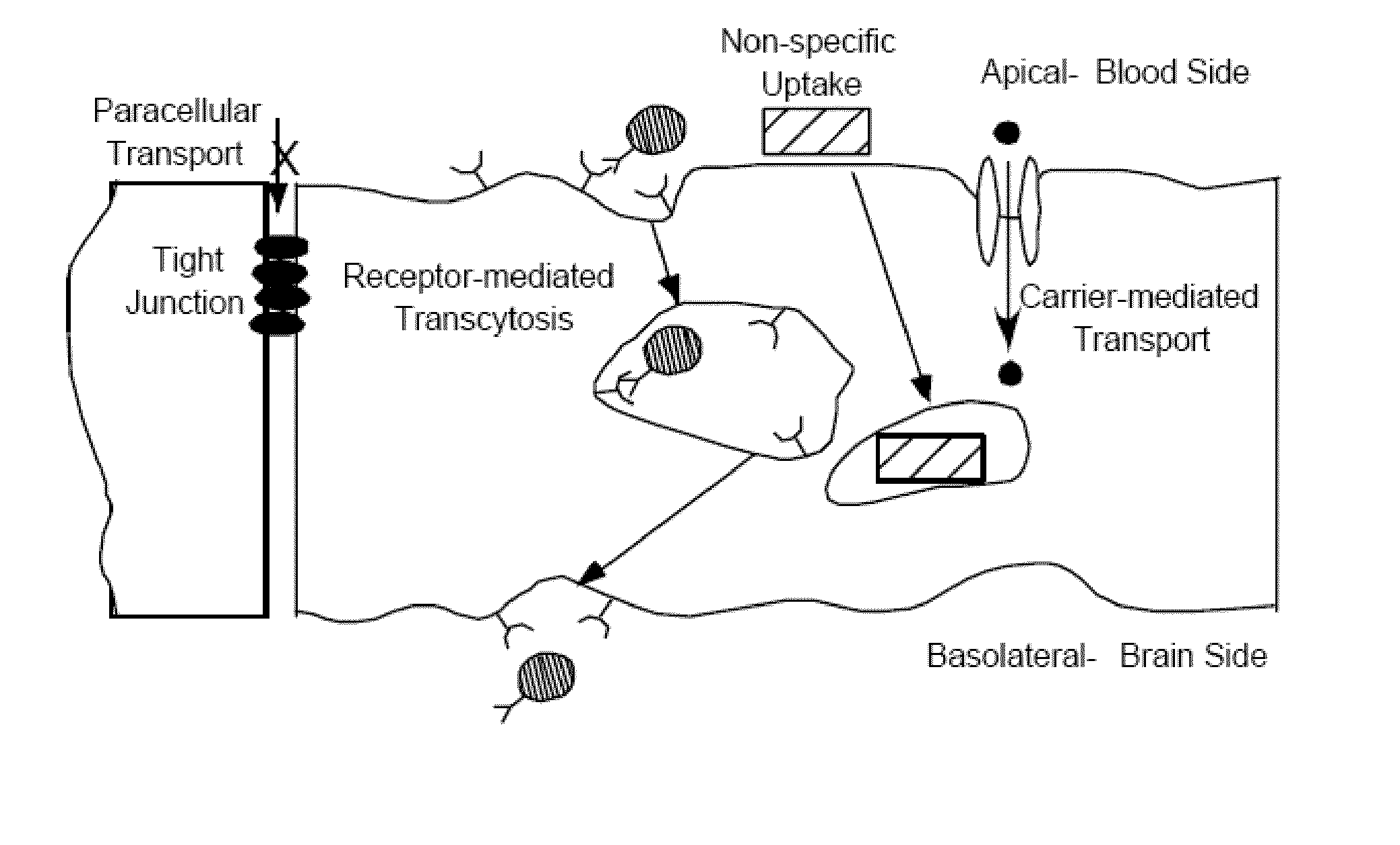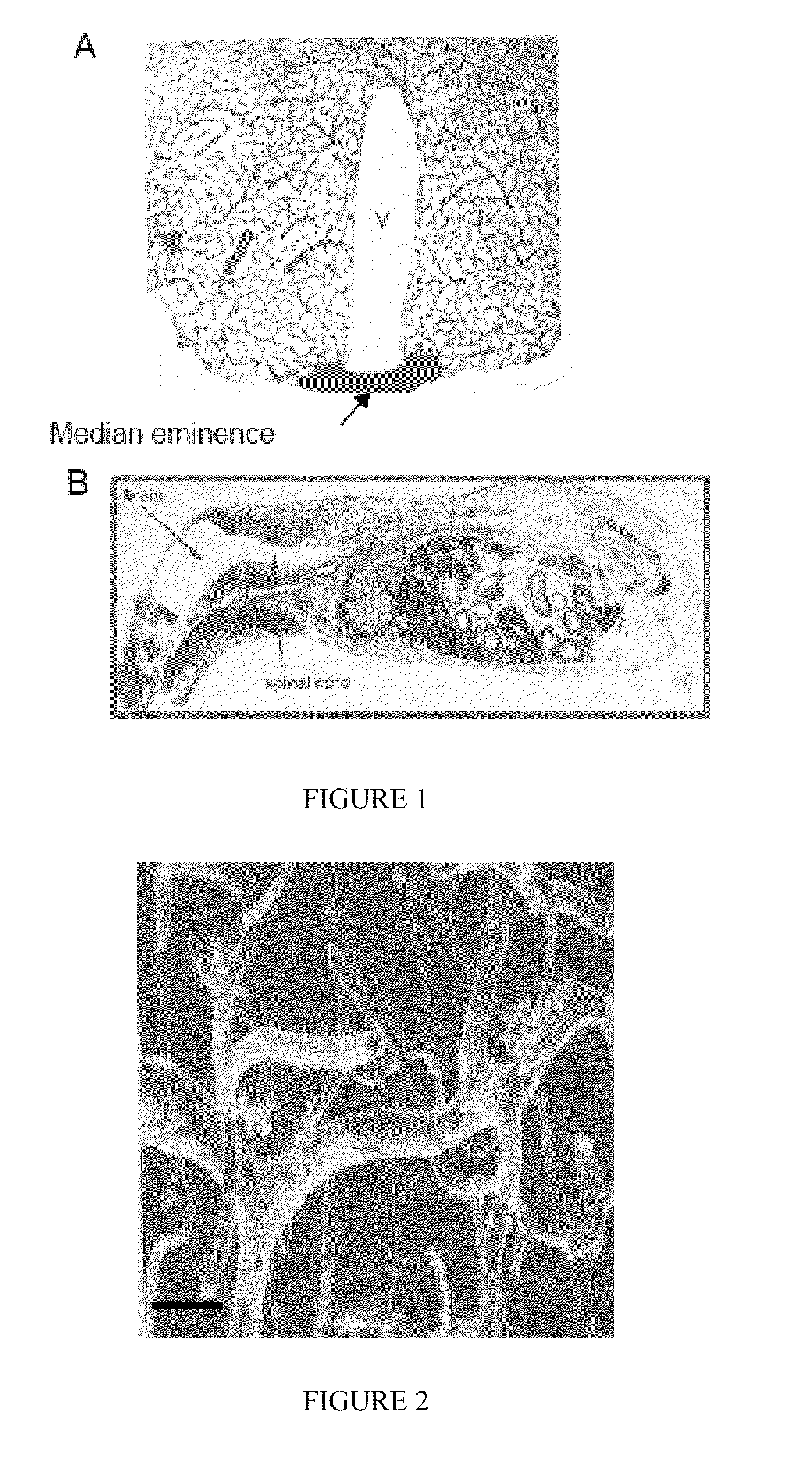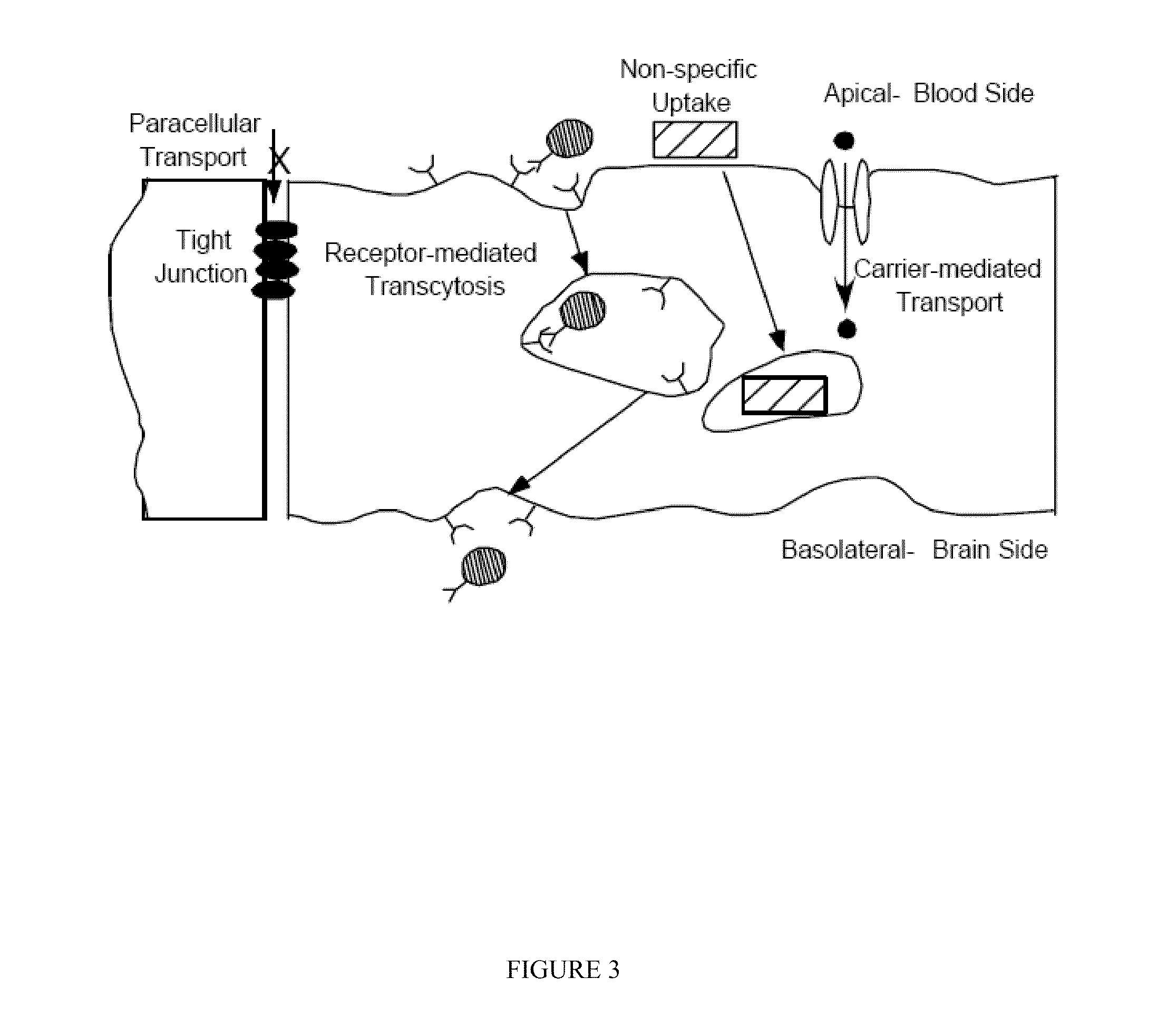Blood-Brain Barrier Targeting Anti-bodies
a blood-brain barrier and anti-bodies technology, applied in the direction of immunoglobulins, peptides, drugs against animals/humans, etc., can solve the problems of lack of treatment modalities, limited treatment options for brain and neurological diseases, and inability to recognize new therapies for treating such diseases
- Summary
- Abstract
- Description
- Claims
- Application Information
AI Technical Summary
Benefits of technology
Problems solved by technology
Method used
Image
Examples
example 1
In Vitro Profiling of Brain Endothelial Cell Surface Using Large scFv Libraries
[0082]In order to simultaneously identify both brain endothelial cell surface proteins (potential BBB-resident transport systems) and antibody targeting reagents (drug delivery vector), the inventors have performed validation of a novel cell surface profiling or “panning” technique. This technique uses a combinatorial library of naïve single-chain antibodies (scFv, FIG. 5) displayed on the surface of yeast to probe the surface of endothelial cells. The antibody library contains ˜109 different scFv, and this diverse collection can be thought of as an “in vitro immune system”. In this context, antibody-cell surface antigen pairs can be identified in a high throughput fashion. Yeast surface display has been well established as a technology for the directed evolution of antibody and T-cell receptors. The display system involves tethering single-chain antibodies to endogenous yeast mating agglutinins via a pol...
example 2
Yeast Cell-Endothelial Cell Targeting with a Model Ligand
[0083]The effectiveness of the panning method was first investigated using a model scFv-surface ligand system (Wang, X. X. and Shusta, E. V. The use of scFv-displaying yeast in mammalian cell surface selections. J Immunol Methods 2005, 304, 30-42) (incorporated herein in its entirety for all purposes). Briefly, the hapten fluorescein was used as the surface ligand and an anti-fluorescein scFv (4-4-20) was used as the yeast-displayed antibody. This system allowed detailed investigation of the factors governing panning success. Yeast displaying 4-4-20 exhibited specific interactions with fluoresceinated rat brain endothelial cells (RBE4 cell line Roux, F., et al., Regulation of gamma-glutamyl transpeptidase and alkaline phosphatase activities in immortalized rat brain microvessel endothelial cells. J Cell Physiol 1994, 159, 101-13.) (FIG. 7) and could be recovered from large backgrounds of nonbinding irrelevant yeast (1 in 106) ...
example 3
Overall Strategy for Identification of Blood Brain Barrier
Binding and Internalizing scFv
[0085]Recognizing the limitations of phage-display, the strategy illustrated in FIG. 9 was developed as a more powerful assay for the identification of scFv's that bind brain endothelial cells. Briefly, as schematically represented in FIG. 9, the scFv library was mixed with an in vitro culture of brain endothelial cells. If a yeast cell has an antibody against a surface protein on endothelial cells, the yeast cell can bind to endothelial cells under proper conditions. If the surface protein is at a higher level, the binding may be more robust. This allowed the yeast binders to be recovered to perform further binding and purification. Specific binders were subjected to functionality tests to determine if they can be endocytosed and trancytosed by endothelial cells and to further identify brain-epitope specificity. This is the first example of yeast-display antibody screening on whole cells. There ...
PUM
| Property | Measurement | Unit |
|---|---|---|
| molecular weight | aaaaa | aaaaa |
| mass transfer surface area | aaaaa | aaaaa |
| penetration distance | aaaaa | aaaaa |
Abstract
Description
Claims
Application Information
 Login to View More
Login to View More - R&D
- Intellectual Property
- Life Sciences
- Materials
- Tech Scout
- Unparalleled Data Quality
- Higher Quality Content
- 60% Fewer Hallucinations
Browse by: Latest US Patents, China's latest patents, Technical Efficacy Thesaurus, Application Domain, Technology Topic, Popular Technical Reports.
© 2025 PatSnap. All rights reserved.Legal|Privacy policy|Modern Slavery Act Transparency Statement|Sitemap|About US| Contact US: help@patsnap.com



